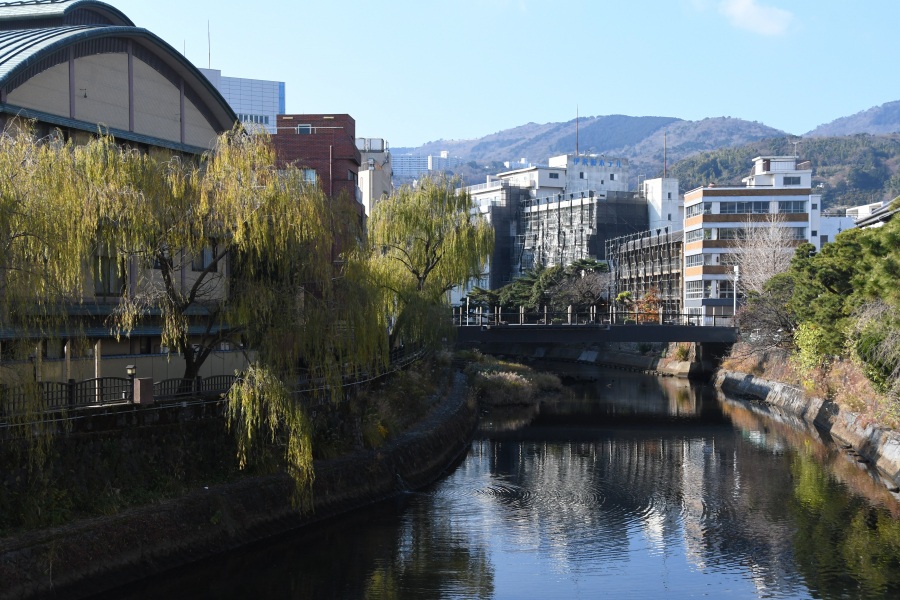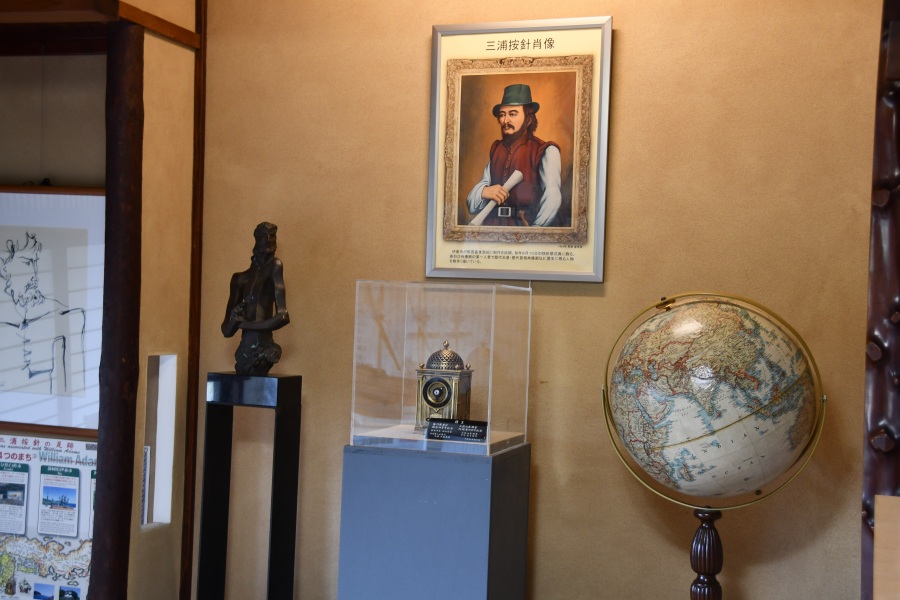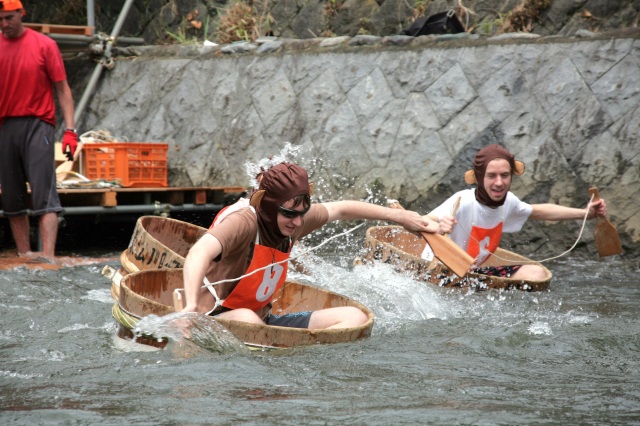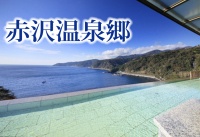
Miura Anjin (William Adams) and Ito City
Translation:
English
In Ito City, every August, the "Anjin Festival" is held to commemorate the construction of Japan’s first ocean-going sailing ship, built by Miura Anjin, also known as William Adams. This article provides an overview of the history of Miura Anjin (William Adams) and the events that inspired this annual festival.
Who Was "Miura Anjin," the Man Who Built Japan's First Western-Style Sailing Ship?

Miura Anjin (Kanji: 三浦按針, English name: William Adams) was a British navigator born in Medway, England, during the late 16th century, a period known as the Age of Discovery. He arrived in Japan after being shipwrecked off the coast of Sashiu, Usuki City, in Oita Prefecture.
After his shipwreck, Anjin was summoned by Tokugawa Ieyasu and traveled to Osaka Castle, standing in for his ailing captain. Upon arrival in Osaka, Anjin was briefly imprisoned by Ieyasu. However, his knowledge of navigation and Western technologies earned him Ieyasu’s trust, and he was appointed as a diplomatic advisor.
The name "按針(Anjin)" means "pilot" or "navigator" in Japanese. Under Ieyasu's orders, it is said that Anjin constructed Japan’s first Western-style sailing ship in Ito.
Note: Although William Adams was given the name "Miura Anjin" when he was granted land by Tokugawa Ieyasu, we refer to him as Miura Anjin throughout this article for consistency.
The Age of Discovery and the Battle of Sekigahara: A Turning Point in Japan

During the second half of the 16th century, the world was deep into the "Age of Discovery." In 1522, Magellan had successfully circumnavigated the globe, setting the stage for an era of exploration and colonial expansion. Spain and Portugal initially dominated global exploration, but soon England and the Netherlands joined the competition for colonial dominance.
In this context, Miura Anjin (William Adams), a British sailor serving as the navigator of a Dutch ship, found himself shipwrecked in Usuki City, Kyushu, in 1600 (Keichō 5) after a treacherous journey.
That same year in Japan, a pivotal event—the Battle of Sekigahara—was unfolding. This battle would determine the future leadership of the country. Tokugawa Ieyasu was positioning his forces to seize power following the death of Toyotomi Hideyoshi. In this period of upheaval, Ieyasu took a keen interest in the Western weapons aboard the Dutch trading ship, Liefde, on which Miura Anjin had arrived.
Adams' arrival coincided with one of Japan's most significant historical turning points, aligning him with the forces shaping the country's future.
The Relationship Between Ito and Miura Anjin

In 1601 (Keichō 6), Tokugawa Ieyasu summoned Miura Anjin (William Adams) to Edo Castle and commissioned him to build a Western-style sailing ship. This initiated the search for an ideal location to construct the shipyard.
Historically, Japan had attempted to build large ships modeled after Chinese vessels during the Kamakura period. Minamoto no Sanetomo, the third shogun of the Kamakura shogunate, ordered Chen Heqing, a craftsman from China’s Song Dynasty, to lead the construction. A Chinese-style ship was completed in 1217 (Kenpō 5) on the beach at Yuigahama, Kamakura. However, due to the shallow waters, the ship couldn’t be launched and eventually deteriorated without ever sailing.
It is believed that Ieyasu was aware of this historical failure, which is why he did not choose Yuigahama for the new shipyard. Instead, he selected the mouth of the Matsukawa River in Ito, a location rich in timber resources and backed by the Amagi Mountains. Anjin, along with ship magistrate Mukai Shogen, was sent to Ito to begin construction.
Ieyasu may have learned about the advantages of Ito’s terrain during the Siege of Odawara or while overseeing the construction of Edo Castle’s stone walls. Once in Ito, Anjin built a dock at the mouth of the Matsukawa River and began constructing two Western-style sailing ships.
Column

The Emmy Award-Winning Drama SHOGUN and Its Legacy
In 2024, the historical drama series SHOGUN, produced by the creator of Top Gun: Maverick and starring Hiroyuki Sanada as producer and lead actor, won an astonishing 18 categories at the Emmy Awards—widely considered the highest accolade in American television. Congratulations!
SHOGUN is based on the life of Miura Anjin and his connection to Ito and Tokugawa Ieyasu. The series has been internationally praised for its historical depth and for bringing Anjin’s story to a global audience.
Over 40 years ago, another television drama, also titled Shogun, captivated American audiences. Although it was a fictional adaptation based on a novel, Miura Anjin was the inspiration for the protagonist. The show was set in places associated with Anjin, such as Izu. This earlier drama is credited with sparking a wave of interest in Japanese culture across the United States, marking the beginning of a cultural exchange that continues to this day.
The Western-Style Sailing Ship "San Buena Ventura" Built in Ito

One of the two Western-style sailing ships built in Japan by Miura Anjin (William Adams), a Japanese galleon, was later named San Buena Ventura and sailed to Mexico. A galleon is a large, ocean-going sailing ship primarily used for long-distance trade.
The first ship Anjin constructed was an 80-ton Western-style vessel, completed in 1604, which was used for surveying the Kanto region. In 1607, Anjin built a second ship, the 120-ton San Buena Ventura, in Ito. This ship became a key symbol of Japan's evolving maritime capabilities.
In recognition of this accomplishment, Tokugawa Ieyasu granted Anjin 250 koku of land in the Hemi area of Yokosuka City.
In 1609, an incident occurred when the former Governor of the Philippines, Don Rodrigo Vivero, and his crew were shipwrecked off the coast of Iwawada Village in Kazusa Province (modern-day Onjuku Town in Chiba Prefecture). After hearing the news in Sunpu, Ieyasu decided to lend Don Rodrigo the San Buena Ventura. Thanks to this generous act, Rodrigo and his companions were able to return safely to Mexico aboard the ship, departing from Uraga.
Column

The Rescue of the Spanish Shipwreck
On September 30, 1609, the Spanish galleon San Francisco was caught in a storm and drifted ashore at Iwawada, in present-day Onjuku Town, Chiba Prefecture. Thanks to the desperate and compassionate rescue efforts of local residents, Don Rodrigo and 316 crew members were saved.
Rodrigo and his companions stayed at Omiya Temple in Iwawada for 37 days before meeting Tokugawa Hidetada, the second shogun, at Edo Castle. They later met with Tokugawa Ieyasu in Sunpu.
On Ieyasu’s orders, the 120-ton ship built by William Adams in Ito was lent to Don Rodrigo and his crew. They departed from Uraga on June 13, 1610, and, after a four-month journey, safely arrived in Acapulco, Mexico, on October 27.
Image: The rescue of the crew of the San Francisco.
The Sand Dock Built at the Mouth of the Matsukawa River in Ito

Miura Anjin (William Adams) utilized the riverbank at the mouth of the Matsukawa River as a shipyard for constructing ships in Ito. This location was particularly suitable for shipbuilding in an age without mechanical power due to two main characteristics: 1) the riverbank was steep and deep, and 2) the topography featured well-developed sandbanks.
Tokugawa Ieyasu chose Ito as the site for the shipyard and sent Miura Anjin and the ship magistrate, Mukai Shogen, to oversee the operations. Traditional research indicates that the sand dock was located on the right bank of the Matsukawa River; however, studies combined with geological surveys suggest that it may have actually been on the left bank.
Shipbuilding Methods Used by Miura Anjin at the Estuary of the Matsukawa River:
- Digging a Hole: A hole was dug in the sandbank near the river mouth, and logs were laid down to create a base.
- Dam Construction: Once the ship was completed, the river was dammed to collect water.
- Launching the Ship: The dammed river water was then released into the hole where the ship was built, allowing it to float and be launched.
Column

"Keichō Observations Record: The Construction of Chinese Ships"
The ship was constructed on the beach in Ito, Izu Peninsula, which was ideal for shipbuilding due to its riverside location. A hole was dug in the sandbank along the coast, and columns were lined up on the sand to create a stable base, upon which the bottom of the ship was built.
As the assembly of the hull progressed, sand was excavated to gradually lower the ship. Once the construction was complete, the river was dammed, and water was directed all at once around the ship to launch it into the sea. This ship later became moored at the Asakusa River.
Tokugawa Ieyasu and Miura Anjin
Miura Anjin (William Adams) first met Tokugawa Ieyasu in Osaka, where Ieyasu interrogated him. Over time, Ieyasu became increasingly interested in Anjin's knowledge and skills. When the Battle of Sekigahara broke out, Ieyasu took control of Osaka Castle, and Anjin, along with his companions, was restricted from leaving, forcing them to remain in Uraga for about two years.
By 1601, after securing his dominance over Japan, Ieyasu began meeting with Anjin more frequently in Edo. Eventually, Ieyasu ordered Miura Anjin and the ship magistrate Mukai Shogen to travel to Ito, in Izu Peninsula, to construct a small Western-style sailing ship. They successfully built a vessel with an 80-ton cargo capacity, smaller than the Liefde, but Ieyasu was highly impressed with its completion.
Following this success, Anjin began serving as a diplomatic advisor to Ieyasu. The next year, Ieyasu commissioned Anjin to construct a second, larger Western-style ship, the San Buena Ventura. In recognition of his contributions to shipbuilding and navigation advancements in Japan, Ieyasu awarded Anjin two swords and a 250-koku estate in the Heimi area.
Column

Tokugawa Ieyasu's Favorite Western Clock
The Western-style sailing ship built by Miura Anjin (William Adams) in Ito was later lent to Rodrigo de Vivero, the interim governor of the Spanish Philippines, who had been shipwrecked off the coast of Onjuku Town in Chiba Prefecture in 1610. The ship carried about 80 people as it crossed the Pacific Ocean and arrived in Acapulco, Mexico. In gratitude for Vivero’s safe return, the King of Spain gifted Tokugawa Ieyasu a Western clock in 1611. This clock, shown in the accompanying photograph, is still preserved at Kunōzan Tōshō-gū Shrine.
Photo: A replica of a Western clock displayed in the Miura Anjin exhibition room on the second floor of the Tokaikan.
Tadashi Makino and Miura Anjin

Tadashi Makino is a leading researcher on Miura Anjin (William Adams) and has played a pivotal role in promoting Anjin’s legacy. As the executive director of the Ito Tourism Association, he advocated for the establishment of the "Anjin Festival" to honor Anjin’s contributions, dedicating much of his youth to planning and organizing the event.
A former naval officer, Makino was naturally drawn to Anjin, who had also been a captain in the British fleet, sparking his passion for researching Anjin’s life and achievements. Makino conducted extensive interviews with key figures in Anjin studies, including Seiichi Iwajiro, Akio Okada, Saburo Minagawa, Tatsuhiko Ogawa, Yoshiharu Ida, and Ichiro Iida. He visited numerous locations associated with Anjin, such as Gillingham in Kent, Rotterdam in the Netherlands, Tessel Island, and Vlieland, retracing Anjin's journey.
Makino’s research culminated in several publications, including The Footsteps of Miura Anjin and The Blue-Eyed Samurai: Miura Anjin. For younger readers or those unfamiliar with Anjin, he authored a children’s picture book titled The Blue-Eyed Samurai: The Story of Miura Anjin. Makino's work is prominently featured in the Miura Anjin exhibition room at the Tokaikan, a significant cultural site in Ito.
Through his dedicated research and travels, Tadashi Makino has become an indispensable figure in preserving and celebrating the history of Miura Anjin.
Column

(Reprint) The Blue-Eyed Samurai: The Story of Miura Anjin
This picture book tells the story of Miura Anjin, who played a key role during the Edo period, in both English and Japanese. Written by Tadashi Makino with illustrations by Tetsuro Mori, the book offers an accessible introduction to Anjin’s life.
The book can be purchased at the Tokaikan and at several bookstores in Ito City, including Sagamiya, Iwakami Bookstore, Bunsendo, and Bunkado. It’s an engaging and easy-to-understand read, perfect for those wanting to learn more about Anjin!
Introduction to Tourist Spots and Events Related to Miura Anjin

(1) Matsukawa (Ito Okawa River)
It is believed that Miura Anjin (William Adams) used the Matsukawa River, which flows through the center of Ito City, as a location for his shipyard. Several annual events take place along the river, including the "Ito Sukechika Matsuri" and the popular "Ito Matsukawa TARAI-NORI Race."
 Matsukawa River where Anjin built the sand docks.
Matsukawa River where Anjin built the sand docks.
(2)Anjin Festival (August 8th, 9th, 10th every year)
The largest festival in Ito City and Izu peninsula, the Anjin Festival is held every August to honor Miura Anjin’s achievement of building Japan's first Western-style sailing ship in Ito. One of the highlights of the festival is the breathtaking fireworks display.
 Anjin Festival Fireworks
Anjin Festival Fireworks
(3) Anjin Memorial Park
This park features sculptures by artist Kenji Shigeoka, offering visitors a tranquil space to reflect on Miura Anjin's legacy.
(4) Tojin River
Flowing near Anjin Memorial Park, the Tojin River is thought to have a connection to Miura Anjin, with "Tojin" possibly referring to him.
 In "Anjin Memorial Park", you can take a walk while feeling the sea breeze.
In "Anjin Memorial Park", you can take a walk while feeling the sea breeze.
(5) Tokaikan
Tokaikan, a former ryokan, houses an exhibition room dedicated to Miura Anjin.
 " Tokaikan " used to be a onsen hotel.
" Tokaikan " used to be a onsen hotel.
(6) Anjin Dori
Located just south of the Okawa Bridge, Anjin Dori is a lively shopping street named after Miura Anjin. Visitors can find charming old coffee shop like Yamamoto Coffee, which opens early in the morning.
 Shutter art adorns the shopping street on "Anjin Dori".
Shutter art adorns the shopping street on "Anjin Dori".
(7) Ito City Hall with a Model of San Buena Ventura
In the lobby of Ito City Hall’s ground floor, visitors can see a conceptual model of the "San Buena Ventura," the Western-style ship built by Miura Anjin.
 A model of the San Buena Ventura
A model of the San Buena Ventura
(8) Anjin Birthday Festival (Held Every September )
Every year in late September, Ito City celebrates the birthday of Miura Anjin (September 24, 1564) with the "Anjin Birthday Festival."
 "St Mary Magdalene's Church(Medway city)" where Anjin was baptised.
"St Mary Magdalene's Church(Medway city)" where Anjin was baptised.






































